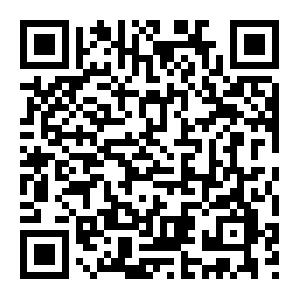|
[1]
|
Sabaliunas D, Webb S F, Hauk A, et al. Environmental fate of triclosan in the River Aire basin, UK[J]. Water Research, 2003,37(13):3145-3154
|
|
[2]
|
Pkota A, Heldler J, Halden R U. Detection of triclocarban and two co-contaminating chlorocarbanilides in US aquatic environments using isotope dilution liquid chromatography tandem mass spectrometry[J]. Environmental Research, 2007, 103(1): 21-29
|
|
[3]
|
Talia E A, Halder R U. Environmental exposure of aquatic and terrestrial biota to triclosan and triclocarban[J]. Journal of the American Water Resources Association, 2009, 45(1):4-13
|
|
[4]
|
Kolpin D W, Furlong E T,Meyer M T, et al. Pharmaceuticals, hormones and other organic wastewater contaminants in U.S. streams, 1999—2000: anationalreconnaissance[J]. Environ Sci Technol, 2002, 36(6):1202-1211
|
|
[5]
|
Xu W H, Zhang G, Zou S, et al. Determination of selected antibiotics in the Victoria Harbour and the Pearl River, South China using high-performance liquid chromatography-electrospray ionization tandem mass spectrometry[J]. Environmental Pollution, 2007, 145(3):672-679
|
|
[6]
|
Peng X Z, Yu Y Y, Tang C M, et al. Occurrence of steroid estrogens,endocrine-disrupting phenols,and acid pharmaceutical residues in urban river in water of the Pearl River Delta, South China[J]. Sci Total Environ,2008, 397(1/3):158-166
|
|
[7]
|
Margaretha A, Maria P, Jari P, et al. Triclosan, a commonly used bactericide found in humanmilk and in the aquatic environment in Sweden[J]. Chemosphere,2002, 46(9-10):1485-1489
|
|
[8]
|
Mats A, Margaretha A, Michael S M, et al.Triclosan in plasma and milk from Swedish nursing mothers and their exposure via personal care products[J]. Sci Total Environ,2006, 372(1):87-93
|
|
[9]
|
Miller T J, Heidler S, Chillrud A, et al. Fate of triclosan and triclocarban in estuarine sediment[J]. Environ Sci Technol, 2008, 42(12):4570-4576
|
|
[10]
|
Snyder E H, O'Connor G A, McAvoy D C.Measured physicochemical characteristics and biosolids-borne concentrations of the antimicrobial triclocarban(TCC)[J]. Sci Total Environ, 2010,48 (13):2667-2673
|
|
[11]
|
Chen J G, Ahn K C, Gee N A, et al. Triclocarban enhances testosterone action: a new type of endocrine disruptor?[J]. Endocrinology, 2008, 149(3): 1173-1179
|
|
[12]
|
吕妍,袁涛,王文华,等.个人护理用品(PCPs)生态风险评价研究进展[J].环境与健康杂志,2007,24(8):650-653
|
|
[13]
|
David R O, Donald J V, Josff I,et al. Aquatic toxicity of triclosan[J]. Environmental Toxicology and Chemistry, 2002, 21(7):1338-1349
|
|
[14]
|
Foran C M, Bennett E R, Benson W H. Developmental evaluation of a potential non-steroidal estrogen: triclosan[J]. Marine Environmental Research, 2000, 50(1/5): 153-156
|
|
[15]
|
Consortium T. Iuclid Data Set.TCC Consortium. New York: 2002: 44
|
|
[16]
|
Ben D G,Thomas M Y.The antimicrobial triclocarban stimulates embryo production in the freshwater mudsnail Potamopyrgus antipodarum[J]. Environmental Toxicology and Chemistry, 2010, 29(4):966-970
|
|
[17]
|
Chen X J, Feng W S, Miao W, et al. A microcalorimetric assay of Tetrahymena thermophila for assessing tributyltin acute tovicity[J].Journal of Thermal Analysis and Calorimetry, 2008, 94 (3):779-784
|
|
[18]
|
Vivian R, Dayeh S L, Chow K S, et al. Evaluating the toxicity of Triton X-100 to protozoan, fish, and mammalian cells using fluorescent dyes as indicators of cell viability[J]. Ecotoxicology and Environmental Safety, 2004, 57:375-382
|
|
[19]
|
Susanne R,Sebastian K,Carolin G,et al. Toxicity profiles of four metals and 17 xenobiotics in the human hepatoma cell line HepG2 and the protozoa Tetrahymenapyriformis—a comparison[J]. Environmental Toxicology,2011,26(2):171-186
|
|
[20]
|
戴宇飞,郑玉新.毒理学中心法则的重新审视——毒物兴奋性剂量反应关系及其对毒理学发展的影响.国外医学卫生学分册,2003,30(4):246-249
|
|
[21]
|
Binelli A, Cogni D, Parolini M, et al. In vivo experiments for the evaluation of genotoxic and cytotoxic effects of triclosan in zebra mussel hemocytes[J]. Aquatic Toxicology, 2009, 91(3): 238-244
|


 点击查看大图
点击查看大图


 下载:
下载:
